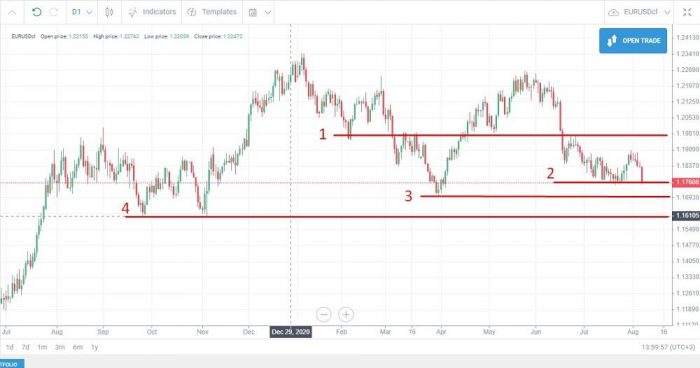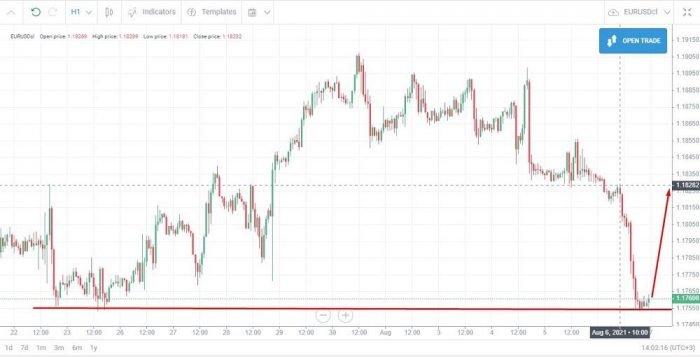Day trading strategies are also known as intraday trading. It implies opening and shutting positions inside one day.
Sounds crazy, right?
Get a chance to Win iPhone 13 Pro Max
– LiteFinance 2022 Giveaway
Timeframes from M30 to H4 are utilized in these strategies to examine the Forex market, though the most well-known time period is H1. Different spans can be utilized as well.
However there is one rule: an trade should be opened and shut inside one day to stay away from trade costs.
In this article, you will figure out how does day trading work and sort out with day trading fundamentals.
So, let’s dive deeper!
What is Day Trading?
Intraday Forex trading is a type of trading in which a position is kept open for no more than 24 hours without keeping it overnight. This means no swap costs. Any timeframe can be used for analysis, but the most popular time intervals are H1 and H4.
Unlike scalping, trades are kept open for several hours – this allows you to assess the situation without emotion and haste and not overdo it at the same time. You don’t need a large deposit if you can avoid spikes in local volatility.
Day strategies are the favorite type of trading for novice traders. Brokers have no problems with day trading, which cannot be said about scalping. Price noise is partially smoothed out (there are no local chaotic two-way movements), wave patterns are discernible.
And most importantly, you don’t need to make hasty decisions, but at the same time, you don’t have to wait long for the result.
Intraday trading is speculative, so the financial instruments are mostly currency pairs. Stock and commodity CFDs are more suitable for long-term strategies where a trade is kept in the market for 3-5 days.
On the other hand, cryptocurrencies are an ideal tool for intraday trading: scalping with them is not profitable due to large margin, while long-term trade carries unjustified risks. And the volatility of 3-5-10% per day bodes quite well for forward-thinking traders.
How does day trading work?
Knowing thoroughly how Day Trading actually works is very much essential before diving into day trading strategies. So, how about we check out a blueprint of an estimate in day trading for beginners for the EUR/USD currency pair? So, here’s the deal:
Analyzing the D1 timeframe:

In the daily timeframe, the price stopped at the resistance level “2”. Further movement to levels “3” and “4” is possible. But the price reached level “4” for the last time in the fall of 2020, while level “3” was tested by the price on March 31, 2021.
The most probable scenario seems to be further movement to level “3” and a reversal towards level “1”. However, a rebound upward from level “2” is also quite probable.
Let’s Check the H1 timeframe (day trading stage):

Here you can see that on August 6, Friday, the price went down sharply, reaching the support level, and went up with several small candles before the weekend.
Markets are usually calm before weekends and holidays.
In the daily timeframe, we can see approximate levels, but there is no exact answer to where the price will go. In the hourly interval, we can see that after touching the resistance level, the price aims for upward movement.
After the opening of the session on Monday, we wait for 2-4 candles. They will identify the underlying movement. We open a trade in the direction of the trend with a stop order just below the current resistance level.
We set take profit at a mark just below level “1” from the first screenshot, which corresponds to the price from the second screenshot, to which the arrow points.
Or we close the position at the end of the day. Potential profit is 50-60 points, which corresponds to the average daily volatility of this pair.
To Conclude with, This is one example of market analysis that shows the general idea: analyze the higher timeframe, draw the levels, build the patterns and understand the fundamental reasons for the existing trend or pattern.
After That go to a lower timeframe, wait for 1-2-3 candles and confirm the hypothesis made on the higher timeframe. Then open a day trade in the direction of the trend and the general movement of the related markets.
 Earn Money Forex Best Forex Trading Experience
Earn Money Forex Best Forex Trading Experience








